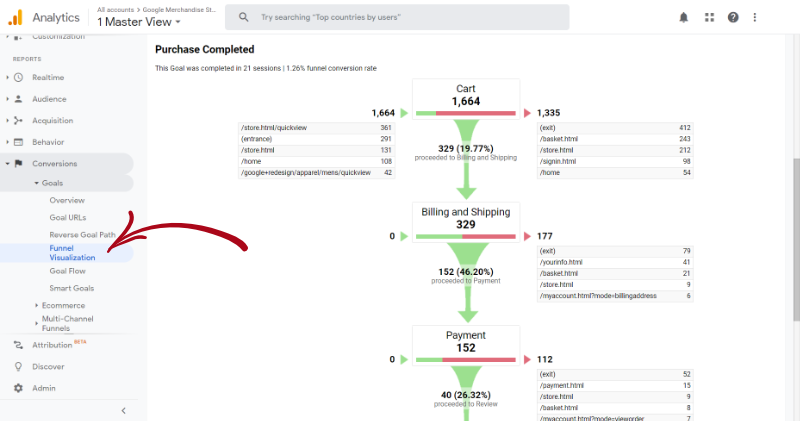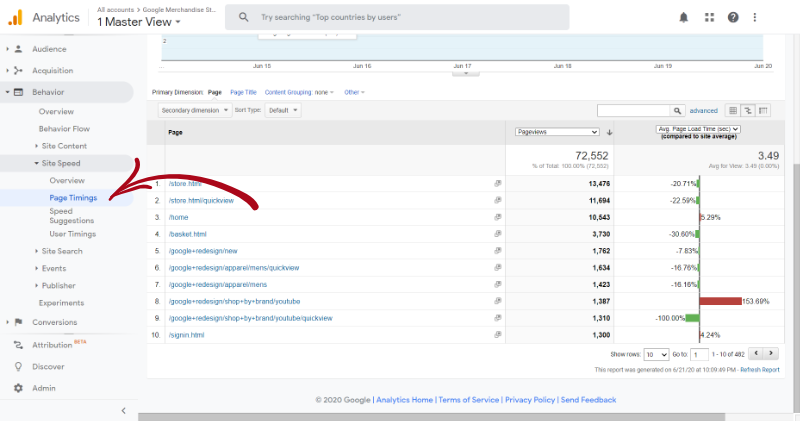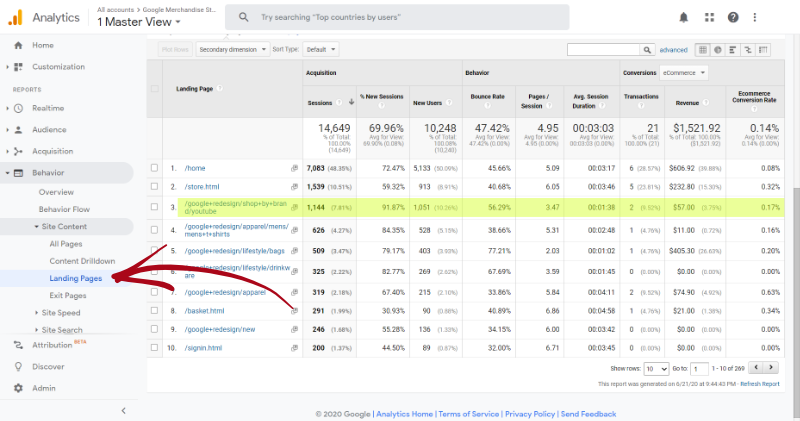SEO
Free SEO Analysis
SEO Services
Content Marketing Services
Local SEO
Link Building Services
Specialized SEO Services
PPC
REPUTATION MANAGEMENT
Free Reputation Management Analysis
Reputation Management Services
Review Management Services
Specialized Reputation Management Services
CEO Reputation Management
Brand Enhancement
Business and Directory Listings
Comprehensive Reputation Management Audit
SOCIAL MEDIA
Free Social Media Analysis
Specialized Social Services
WEB DEVELOPMENT
Free Website Analysis
Web Design Services
Mobile Development Services
Website Maintenance Services
Specialized Development Services
MARKETING AUTOMATION
Free Marketing Automation Analysis
Specialized Marketing Automation Services
Comprehensive Marketing Automation
INDUSTRIES
ABOUT DMA
Digital Marketing
Conversion Rate Optimization: An Actionable, In-Depth Guide
Request a quote
Its Fast, Easy & Free
Executive Summary
- If you’re not bringing in the right kind of traffic, the traffic with high-intent that’s ready to convert, your business isn’t going to grow
- Conversion rate optimization is the process of increasing the percentage of visitors who complete a goal on your site.
- When you collect and analyze real data, there’s no guessing involved. You can build your conversion rate optimization strategy on what’s really happening.
Are you getting a lot of traffic, but no sales or signups? Sounds like you need to work on conversion rate optimization (CRO)!
Too often, marketers get so laser-focused on vanity metrics like traffic and ignore the type of traffic they’re bringing in.
And here’s the thing:
If you’re not bringing in the right kind of traffic, the traffic with high-intent that’s ready to convert, your business isn’t going to grow.
Sure, your traffic may be off the chart. But your conversion rate will be pathetic.
In this article, we’ll take you through everything you need to know about conversion rate optimization, why conversions matter more than traffic, and how to apply conversion rate optimization tactics to your own website.
Let’s get started with some quick definitions so we’re all on the same page.
What Is a Conversion?
A conversion is any goal completed by a visitor on your site. This could be completing a purchase, signing up for your email newsletter, sharing an article from your blog, or anything else that you deem to be important.
There are small conversions call micro-conversions that can be viewed as smaller steps a visitor takes to prep them for a macro-conversion.
Macro-conversions, then are the primary goal of your page. For eCommerce businesses, a macro-conversion is usually a purchase.
What Is a Conversion Rate?
A conversion rate is the percentage of goals completed by visitors to your site. The formula is goals completed / site traffic * 100.
The conversion rate optimization we’re talking about is on-page, meaning it happens after a visitor comes to your site. This doesn’t take into consideration the conversions for your paid ads or organic traffic.
What Is Conversion Rate Optimization?
Conversion rate optimization is the process of increasing the percentage of visitors who complete a goal on your site. This requires a thorough knowledge of how your site’s visitors use your site, the actions they take while on your site, and the sticking points that are keeping them from converting.
If you’re ready to get started with conversion rate optimization fast, Digital Marketing Agency is here with a comprehensive approach to conversion optimization that ensures every part of the sales process is optimized to ensure that no lead is left in limbo. Contact us for a quote today!
Benefits of Conversion Rate Optimization by Webpage
CRO has many benefits. Let’s take a look at four different pages or sections of your website and how conversion rate optimization benefits each.
Homepage
It’s likely that your homepage is the page on your site that receives the most traffic. As such, it’s your first opportunity to grab visitors’ attention and get them to stay.
CRO has a big impact on homepages. You can highlight your product information, use live chat or chatbots to encourage interaction with visitors, and use creative calls to action to pull visitors deeper into your site.
Pricing Page
Pricing pages or product pages are where purchases happen—or don’t! You can use conversion rate optimization to answer visitor questions and handle objections.
Blog
Every single article on your blog is a chance to convert visitors.
To optimization your articles for conversions, you might add a call to action (CTA) throughout the article, asking readers to sign up for your email list in exchange for a helpful lead magnet (like an ebook, white paper, or other useful, downloadable tool).
Landing Pages
Landing pages are another area where CRO can really make a difference. If your landing page isn’t optimized, visitors won’t know what to do or won’t care.
As with your other pages, you can use CTAs to ensure that visitors know exactly what their next steps should be, but you’ll also want to sell them on why.
Conversion Rate Optimization Analysis & Tactics
Now that you understand how important conversion rate optimization is to every page of your site, you’re probably ready to get started, right?
That’s awesome! But the first thing you need to do is take a look at where your site currently is in terms of conversions and what’s working (or isn’t), so you know where you need to optimize.
It may be tempting to skip this step and work based on gut instincts or hunches, but we strongly advise against it.
When you collect and analyze real data, there’s no guessing involved. You can build your conversion rate optimization strategy on what’s really happening.
There are a couple of ways to get the information you need to high-impact conversion rate optimization. The first is by using your site’s analytics to get the data. The second is through talking with your visitors, customers, and users.
Let’s take a look at both methods.
Analytics
If you want to use the analytics method, Google Analytics is a good tool to get you started. Analytics-based conversion rate optimization will help you understand how visitors are using your site. For example, you can learn:
Where people enter your site
What pages they spend the most time on
Where they came from (which site or channel referred them)
What technology (devices, browsers, operating systems) they use
Who they are in terms of demographics and interests
Where they leave your conversion funnel
With this information, you’ll be better equipped to focus your efforts on the places you’ll see the largest return.
Let’s have a look at some ways you can use Google Analytics to learn more about where to focus your CRO efforts.
Google Analytics
To get started, you’ll want to find out what your funnel conversion rates are. To do that, log in to Google Analytics and click Conversions > Goals > Funnel Visualization.

If you don’t already have conversion goals set up, you’ll need to do that.
In addition to conversion goals, you’ll need to set up a conversion funnel. You’ll use this information to learn how many visitors move from one stage of your funnel to the next or drop out entirely.
Once you have your goals and funnels set up, Google Analytics will need time to gather data before you can take a look at where visitors are dropping out of your funnel.
After you’ve identified where people are leaving your funnel, you can use this information to come up with test cases. What might you change in order to get visitors to stick around instead of dropping out?
We also recommend checking out your site’s speed. To do that, click Behavior > Site Speed > Overview. This will show you the average load times for your site. If you’re interested in a particular page, you can look at Page Timings.

You may be wondering why load times matter.
How about a 7% reduction in conversions if your site loads in four seconds instead of three?
When your load times are slow, fewer visitors will stick around. Instead, they’ll leave your site and go to your competitors. And your search engine rankings will suffer, too.
If you’re looking for ways to speed up your site, check out these tips to improve website speed. If you’re interested in getting your site speed issues fixed right now, Digital Marketing Agency can help with comprehensive website speed optimization services.
People
The next method we’re going to talk about to get data about your site that you can use for CRO deals with people.
Don’t get us wrong, you’re still using those people to collect data. This data, though, will be more about the why behind the way users interact with your site.
There are a few different ways you can collect data from users:
Customer satisfaction surveys
On-site surveys
Usability testing
This type of data is important for understanding why people engaged with your website, why they decided not to buy, what sets you apart from your competitors, and any number of questions.
These are the types of things that data can’t tell you, but that you can use with your quantitative data to get a deeper understanding of how visitors use your site and how you can push them toward conversions.
When surveying users, you’ll want to follow certain best practices in order to get the best response rates.
1. Don’t Ask Too Many Questions
Users just aren’t going to complete long, drawn-out surveys with tons of questions. Keep your surveys short, limited to 5–10 questions. If you need more information, use follow-up surveys.
2. Offer an Incentive
If you offer an incentive, even the possibility of an incentive (like an entry into a drawing), the chances of people completing your survey goes up. People value their time and are willing to give you some of that time if you show them that you value their time, too.
3. Ask Open-Ended Questions
For conversion rate optimization, you want to get visitor responses in their own words. When you can use multiple-choice, go ahead, but you don’t want to put words into the mouths of the people completing your survey.
Now that you understand the different ways you can gather data from your visitors, here’s how to use that data to optimize your site for conversions.
1. Add CTAs to Your Blog Posts
There are different ways to include CTAs within your blog posts.
For starters, you could add an opt-in form with a lead magnet offer to grow your email list.
We also recommend including text-based CTAs. These can either be included in-line as any other link would be, or you can set them apart on their own line in an attention-grabbing style (bold or as an H3 or H4 header).
But, why would you want to use text-based CTAs if you already have an opt-in form CTA?
Banner blindness.
Banner blindness is when a user ignores a banner or display advertisement on a webpage, either willfully or subconsciously. It’s also referred to as ad blindness, banner noise, and ad fatigue.
When you change things up with a text-based CTA, you have a better chance of cutting through the “noise” and grabbing the reader’s attention.
2. Test Your Landing Pages
Landing pages are largely where the magic of marketing happens. They’re where visitors become leads and leads become paying customers.
To get the most from your landing pages and ensure that they’re optimized for conversions, you can run A/B tests.
A/B testing is when you compare two versions of the same content, with a single item changed in the variation.
For landing pages, that could mean changing up your headline on your variation and seeing how it performs compared to your control landing page.
You can A/B test anything on your landing pages: headlines, copy, images, offers, and more.
3. Make It Easy for High-Intent Users to Convert
Not everyone will follow your sales funnel in a linear fashion. You’ll have some users who start and the beginning and leave only to come back months later to start the process all over again. Some users will come into the middle and go back to the beginning before deciding to convert.
And other users will land on your page the first time wanting to convert right away. They don’t want to be wooed, they just want what you have.
You want to make it easy for your visitors to convert at every step along your sales funnel with well-planned and executed content and compelling CTAs.
4. Automate Your Marketing
Whenever possible and appropriate, take advantage of marketing automation. It will make your marketing life so much easier and streamline your sales funnel tremendously.
There are many ways you can automate your marketing using marketing automation software. You can:
Send automatic email series (like welcome emails, customer onboarding emails, and more)
Set sales meetings or book appointments
Send notifications to your sales and marketing teams when certain actions happen on your site
Send cart abandonment
and emails
...and more
5. Optimize High-Performing Content
If you have content that’s bringing in tons of traffic, you can use that to your advantage.
Start by identifying the posts on your site that are getting the most traffic, but aren’t converting as well as you’d like (or at all). You can easily find these posts using Google Analytics (Behavior > Site Content > Landing Pages).

You can see in the image above that the highlighted page gets decent traffic, but doesn’t have great conversions. This content is perfect for optimization!
Check your high-traffic, low-converting content for ways to improve your SEO, change up your offer, or add a stronger CTA.
For tips to help you out, check out our article about how to create great content to improve your SEO results.
Inversely, you can also check out your high-converting, low-traffic posts and optimize them to drive more traffic.
6. Use Retargeting
About 98% of all web users don't convert on their first visit. There’s so much competition in online sales that you have to put forth a lot of effort to earn a second chance.
You get that second chance through retargeting.
With retargeting, you can track each visitor to your site and follow them around the internet with branded ads, luring them back to your site.
Conclusion
If you’re ready to increase your site’s conversion rate, Digital Marketing Agency has you covered. Our in-depth approach to conversions includes everything you need to send sales soaring:
Sales process analysis
A/B testing and multivariate testing
UX analysis
Landing pages
Conversion tracking
...and more!
Plus, Digital Marketing Agency is a full-service SEO, content marketing, and advertising agency—literally your one-stop-shop for conversion rate optimization.
Contact us today for a free quote!
Our Sales team
We are available for you every time
